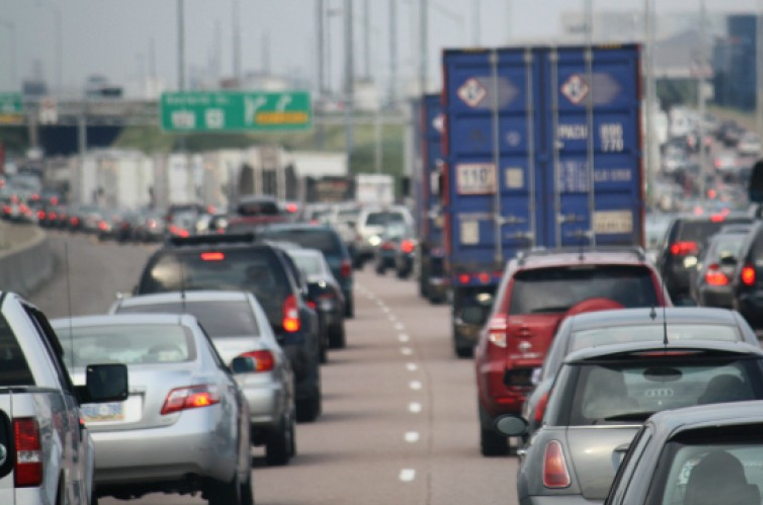Despite the Trump administration’s own prediction that by the end of this century, the world could warm “a disastrous” 7°F, or about 4°C, above pre-industrial levels, the president has decided not to curb greenhouse gas emissions, but instead to use the devastating findings to justify and intensify his pro-fossil fuel agenda.
Buried in a 500-page draft environmental impact statement (pdf) published by the Department of Transportation last month, and highlighted by a Washington Post report on Friday, is the “startling assumption” about just how high the planet’s temperature will soar by 2100.
The document was produced by the National Highway Traffic Safety Administration (NHTSA) as a defense of the administration’s proposal to roll back greenhouse gas emissions standards for cars and light trucks.
“While the proposal would increase greenhouse gas emissions, the impact statement says, that policy would add just a very small drop to a very big, hot bucket,” the Post explained. “The analysis assumes the planet’s fate is already sealed.”
The document’s conclusions, and the Trump administration’s subsequent moves to push policies that appease polluting industries at the expense of people and the environment, baffled and alarmed experts.
“The amazing thing they’re saying is human activities are going to lead to this rise of carbon dioxide that is disastrous for the environment and society. And then they’re saying they’re not going to do anything about it,” responded Michael MacCracken, who served as a senior scientist at the U.S. Global Change Research Program from 1993 to 2002.
Pennsylvania State University scientist Michael E. Mann noted on Twitter Friday that experts previously have warned that “business-as-usual” emissions would cause the global temperature to rise 4-5°C or 7-9°F by the end of the century, which, as the Post pointed out, would produce “catastrophic” consequences for the planet and its inhabitants.
“With this administration, it’s almost as if this science is happening in another galaxy,” Rachel Cleetus of the Union of Concerned Scientists told the newspaper. Although federal researchers have clearly asserted in recent research that human activity is producing dangerous planet-warming emissions, as Cleetus put it, “that feedback isn’t informing the policy.”
Their concerns about the Trump administration come as researchers for the United Nations warn that on a global scale, governments around the world are failing in their efforts to meet the goals of the Paris climate agreement—from which President Donald Trump has vowed to withdraw, even as every other nation on the planet has pledged their support for the accord—which aims to limit global warming to 1.5°C above pre-industrial levels by 2100.
“It’s extraordinarily challenging to get to the 1.5°C target and we are nowhere near on track to doing that,” Drew Shindell, a Duke University climate scientist and a co-author of the Intergovernmental Panel on Climate Change (IPCC) report that will be unveiled in South Korea early next month, told the Guardian.
“While it’s technically possible, it’s extremely improbable, absent a real sea change in the way we evaluate risk,” he said. “We are nowhere near that.”
Although Shindell did not disclose precise details about the forthcoming IPCC report ahead of the U.N. meeting that convenes Oct. 1, he emphasized that policymakers the world over must implement policies to reduce emissions from cars, trucks, and airplanes as well as from fossil fuels—especially coal—by transitioning to clean sources of energy such as solar and wind.





